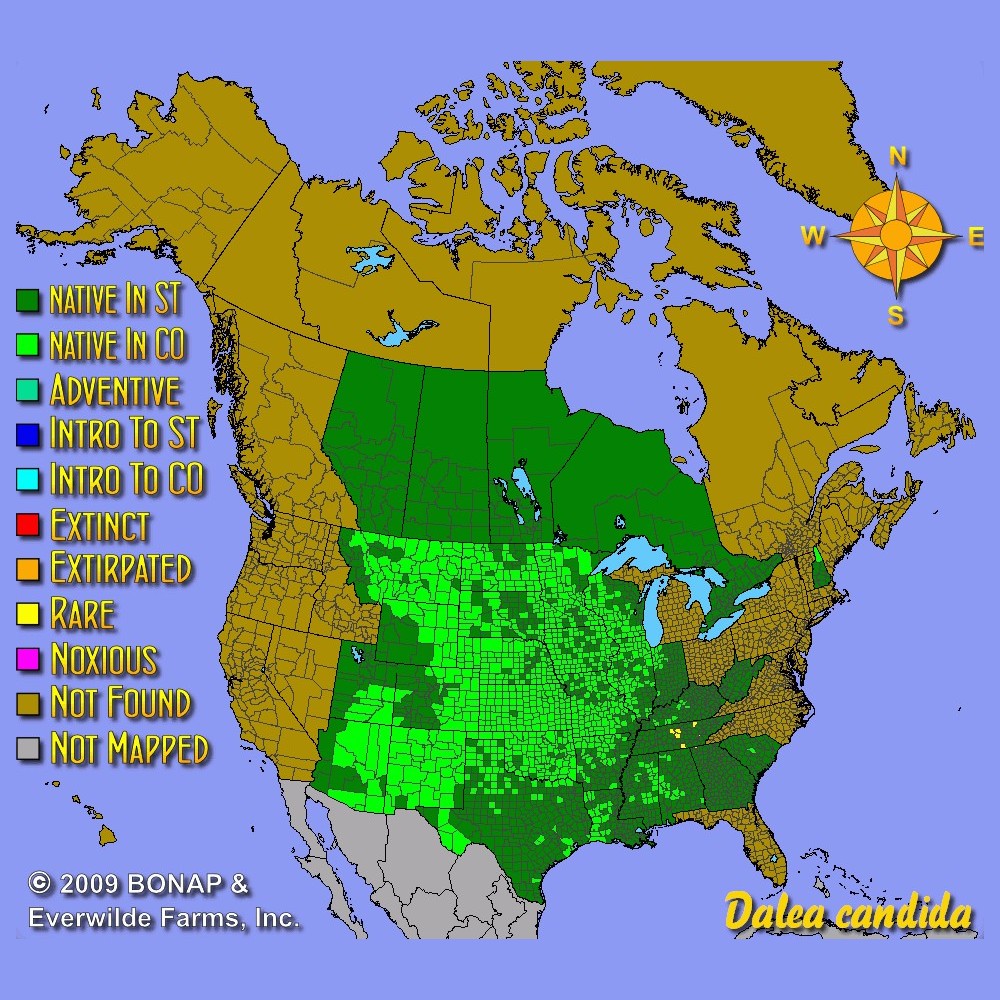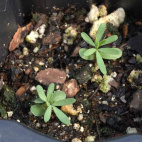White Prairie Clover Seeds
- HOW TO GROW
- FAST FACTS
- REVIEWS
HOW TO GROW
Sowing: Direct sow the Dalea Candida seed in early spring, planting it 1/4" deep in firmly compacted soil. Keep the soil consistently moist until germination, which usually occurs within 10-12 days. Thin or transplant seedlings to 15-18" apart. To start the White Prairie Clover seed indoors, plant it 1/4" deep in a flat; keep the soil at a temperature of 65-70 degrees F and consistently moist until germination. Transplant seedlings after the last spring frost or when they reach a height of several inches. This plant adapts well to sand, clay, and gravel.
Growing: Water seedlings occasionally until they become established; the plant develops rather slowly because of the long tap root, which takes much of the plant's energy in its first year. Mature plants can tolerate drought because of their long taproot, but appreciate watering in dry periods. For the healthiest growth, control surrounding weeds. This plant does not spread aggressively, and attracts bees.
Harvesting: This unusual flower makes a striking addition to flower arrangements. Cut the stems long and place them in water immediately, stripping the leaves that will fall below the water level.
Seed Saving: After the green spike finishes blooming, it will turn brown and dry. Since birds and rodents love eating this seed, it should be harvested promptly to avoid loss. Strip the heads from their stalks, holding a container underneath to catch the falling seed. The hulls do not need to be removed, but will slow germination; uncleaned seed will need to be scarified. Store the White Prairie Clover seeds in a cool, dry place.
FAST FACTS
Latin Name: Dalea candida
Species Origin: US Native Wildflower
Type: Native Wildflowers
Life Cycle: Perennial
USDA Zones: 3, 4, 5, 6, 7, 8, 9
US Regions: Mountain, Arid/Desert, Plains/Texas, Midwest, Northern, Northeast, Southeast
Seeds per Ounce: 22,600
Stratification: No Stratification
Germination Ease: No Stratification
Sunlight: Full Sun, Part Sun
Height: 24 Inches
Color: White
Bloom Season: Blooms Late Summer, Blooms Early Fall
Uses: Attracts Pollinators, Attracts Honeybees, Attracts Butterflies, Cut Flowers
Hope they grow here
Love the packaging. I won't plant these until late-fall/early-winter and then won't know until next year.
DESCRIPTION

HOW TO GROW
Sowing: Direct sow the Dalea Candida seed in early spring, planting it 1/4" deep in firmly compacted soil. Keep the soil consistently moist until germination, which usually occurs within 10-12 days. Thin or transplant seedlings to 15-18" apart. To start the White Prairie Clover seed indoors, plant it 1/4" deep in a flat; keep the soil at a temperature of 65-70 degrees F and consistently moist until germination. Transplant seedlings after the last spring frost or when they reach a height of several inches. This plant adapts well to sand, clay, and gravel.
Growing: Water seedlings occasionally until they become established; the plant develops rather slowly because of the long tap root, which takes much of the plant's energy in its first year. Mature plants can tolerate drought because of their long taproot, but appreciate watering in dry periods. For the healthiest growth, control surrounding weeds. This plant does not spread aggressively, and attracts bees.
Harvesting: This unusual flower makes a striking addition to flower arrangements. Cut the stems long and place them in water immediately, stripping the leaves that will fall below the water level.
Seed Saving: After the green spike finishes blooming, it will turn brown and dry. Since birds and rodents love eating this seed, it should be harvested promptly to avoid loss. Strip the heads from their stalks, holding a container underneath to catch the falling seed. The hulls do not need to be removed, but will slow germination; uncleaned seed will need to be scarified. Store the White Prairie Clover seeds in a cool, dry place.
FAST FACTS
Latin Name: Dalea candida
Species Origin: US Native Wildflower
Type: Native Wildflowers
Life Cycle: Perennial
USDA Zones: 3, 4, 5, 6, 7, 8, 9
US Regions: Mountain, Arid/Desert, Plains/Texas, Midwest, Northern, Northeast, Southeast
Seeds per Ounce: 22,600
Stratification: No Stratification
Germination Ease: No Stratification
Sunlight: Full Sun, Part Sun
Height: 24 Inches
Color: White
Bloom Season: Blooms Late Summer, Blooms Early Fall
Uses: Attracts Pollinators, Attracts Honeybees, Attracts Butterflies, Cut Flowers
Reviews
Review
Hope they grow here
Love the packaging. I won't plant these until late-fall/early-winter and then won't know until next year.









